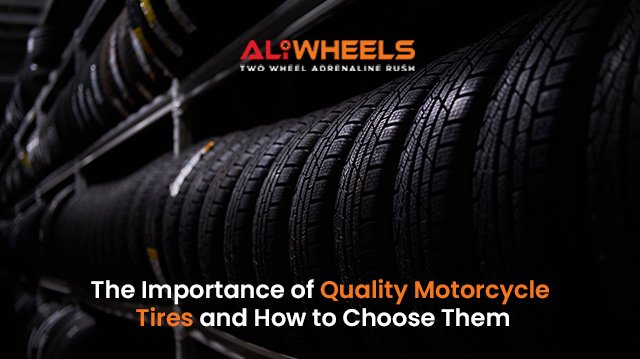Motorcycles require regular maintenance to ensure optimal performance, safety, and longevity. Whether you are a beginner or an experienced rider, keeping your bike in top shape is essential for a smooth and trouble-free ride. Neglecting motorcycle maintenance can lead to breakdowns, costly repairs, or even accidents.
In this comprehensive guide, we will cover essential motorcycle maintenance tips, from basic inspections to advanced care, helping you maximize performance, enhance safety, and extend the lifespan of your motorcycle.
1. Importance of Regular Motorcycle Maintenance
- Performs efficiently and smoothly.
- Prevents costly repairs by identifying issues early.
- Improves fuel efficiency and engine longevity
- Enhances safety by reducing the risk of breakdowns.

2. Essential Motorcycle Maintenance Checklist
A well-maintained motorcycle requires attention to various components. Below is a comprehensive maintenance checklist every rider should follow.
a) Tire Care & Motorcycle Maintenance
Your motorcycle tires are the only contact between your bike and the road, making their condition critical for safety and performance.
- Check tire pressure before every ride using a tire pressure gauge.
- Refer to the manufacturer’s recommended PSI for proper inflation.
- Inspect tire tread depth – replace tires if the tread is too worn or uneven.
- Look for cracks, punctures, or bulges that indicate damage.
- Consider high-quality brands like Michelin, Pirelli, Dunlop, or Bridgestone for longevity and grip.
b) Engine Oil & Filter Change
Motorcycle engines require clean, high-quality oil for smooth operation. Dirty oil can cause friction, overheating, and engine wear.
- Change the oil every 3,000-5,000 miles (or per the manufacturer’s recommendation).
- Use the correct oil type (synthetic or conventional) based on your bike’s requirements.
- Replace the oil filter during every oil change to keep contaminants out.
- Popular oil brands include Motul, Castrol, Shell Advance, and Mobil 1.
c) Chain & Sprocket Maintenance
The chain and sprockets transfer power from the engine to the wheels. Proper care ensures smooth acceleration and prevents premature wear.
- Lubricate the chain every 500-700 miles using a high-quality chain lube.
- Check chain tension – a loose or overly tight chain can lead to damage.
- Inspect sprockets for wear – replace if teeth appear sharp or uneven.
- Brands like DID, RK and JT Sprockets offer durable chain and sprocket kits.
d) Battery Maintenance
A dead battery can leave you stranded. Keeping it in good condition is essential for hassle-free starts.
- Check battery voltage regularly (it should be 12.6V+ when fully charged).
- Keep battery terminals clean and free from corrosion.
- If your bike sits for long periods, use a battery tender/charger.
- Consider maintenance-free or lithium-ion batteries from brands like Yuasa, Shorai, and Antigravity.
e) Brake System Check
Brakes are critical for safety and should be checked frequently.
- Inspect brake pads for wear; replace them if they are below 3mm thickness.
- Ensure brake fluid levels are within the recommended range.
- Check for leaks or air bubbles in the brake lines.
- Use high-quality brake pads from EBC Brakes, Brembo, or Galfer for optimal stopping power.
f) Coolant & Cooling System
For liquid-cooled motorcycles, maintaining the cooling system prevents overheating.
- Check coolant levels before long rides.
- Flush and replace coolant every 1-2 years to prevent corrosion.
- Inspect radiator hoses for cracks or leaks.
- Use high-performance coolants from brands like Engine Ice or Maxima.
g) Air Filter Cleaning & Replacement
The air filter prevents dust and debris from entering the engine.
- Clean reusable filters (e.g., K&N or BMC filters) every 5,000-10,000 miles.
- Replace paper air filters as per manufacturer recommendations.
- A clean air filter improves fuel efficiency and engine performance.
h) Suspension & Fork Maintenance
Proper suspension setup ensures a comfortable and controlled ride.
- Check fork seals for leaks: leaking oil affects suspension performance.
- Adjust suspension preload and damping based on riding style and weight.
- Change fork oil every 10,000-15,000 miles for consistent damping.
- Brands like Öhlins, Showa, and WP Suspension offer premium suspension components.
i) Lights & Electrical System
A well-functioning electrical system enhances visibility and communication on the road.
- Test headlights, brake lights, and turn signals regularly.
- Check wiring for loose connections or damage.
- Upgrade to LED bulbs for better brightness and longevity.
3. Seasonal Motorcycle Maintenance Tips
Motorcycle maintenance changes depending on the season.
a) Summer Riding
- Check coolant levels to prevent overheating.
- Lubricate the chain frequently due to increased dust.
- Ensure proper ventilation in riding gear for comfort.

b) Winter Storage & Maintenance
- Add a fuel stabilizer if the bike is being stored for extended periods.
- Use a battery maintainer to prevent battery drain.
- Cover your bike to protect it from dust and moisture.

4. Common Motorcycle Maintenance Mistakes to Avoid
Skipping Regular Oil Changes – Causes engine damage.
Ignoring Chain Maintenance – Leads to wear and breakage.
Not Checking Tire Pressure – Affects handling and fuel efficiency.
Using the Wrong Brake Fluid – Can damage braking components.
Overlooking Battery Health – Results in sudden failure.
Avoid these mistakes to keep your motorcycle running smoothly and safely.

5. Frequently Asked Questions (FAQs)
1. How often should I service my motorcycle?
Regular maintenance should be done every 3,000-5,000 miles, with inspections before every ride.
2. What is the best oil for my motorcycle?
Use manufacturer-recommended oil. Popular brands include Motul, Castrol, and Shell Advance.
3. How can I extend my battery life?
Charge your battery regularly, especially if not riding for long periods. Using a battery tender helps maintain charge.
4. How do I know if my brake pads need replacing?
If your brakes squeal, feel weak, or the pads are under 3mm, it’s time for a replacement.
5. Why does my motorcycle overheat?
Possible reasons include low coolant levels, dirty radiator fins, or a failing thermostat.
6. Can I do motorcycle maintenance myself?
Yes! Basic maintenance like oil changes, chain lubrication, and tire checks can be done at home.
7. How often should I replace my motorcycle chain?
A well-maintained chain lasts 15,000-20,000 miles. Replace if there are stiff links or excessive slack.
8. What’s the best way to store my motorcycle in winter?
Use a fuel stabilizer, charge the battery, and store it in a dry place with a cover.

Final Thoughts
Routine motorcycle maintenance is essential for a smooth, safe, and enjoyable ride. Whether you ride daily or occasionally, following these maintenance tips will extend your bike’s lifespan, improve performance, and prevent unexpected breakdowns.
At AliWheels, we provide top-quality motorcycle parts, lubricants, and accessories to keep your bike in peak condition. Visit us today for all your motorcycle maintenance needs!


















